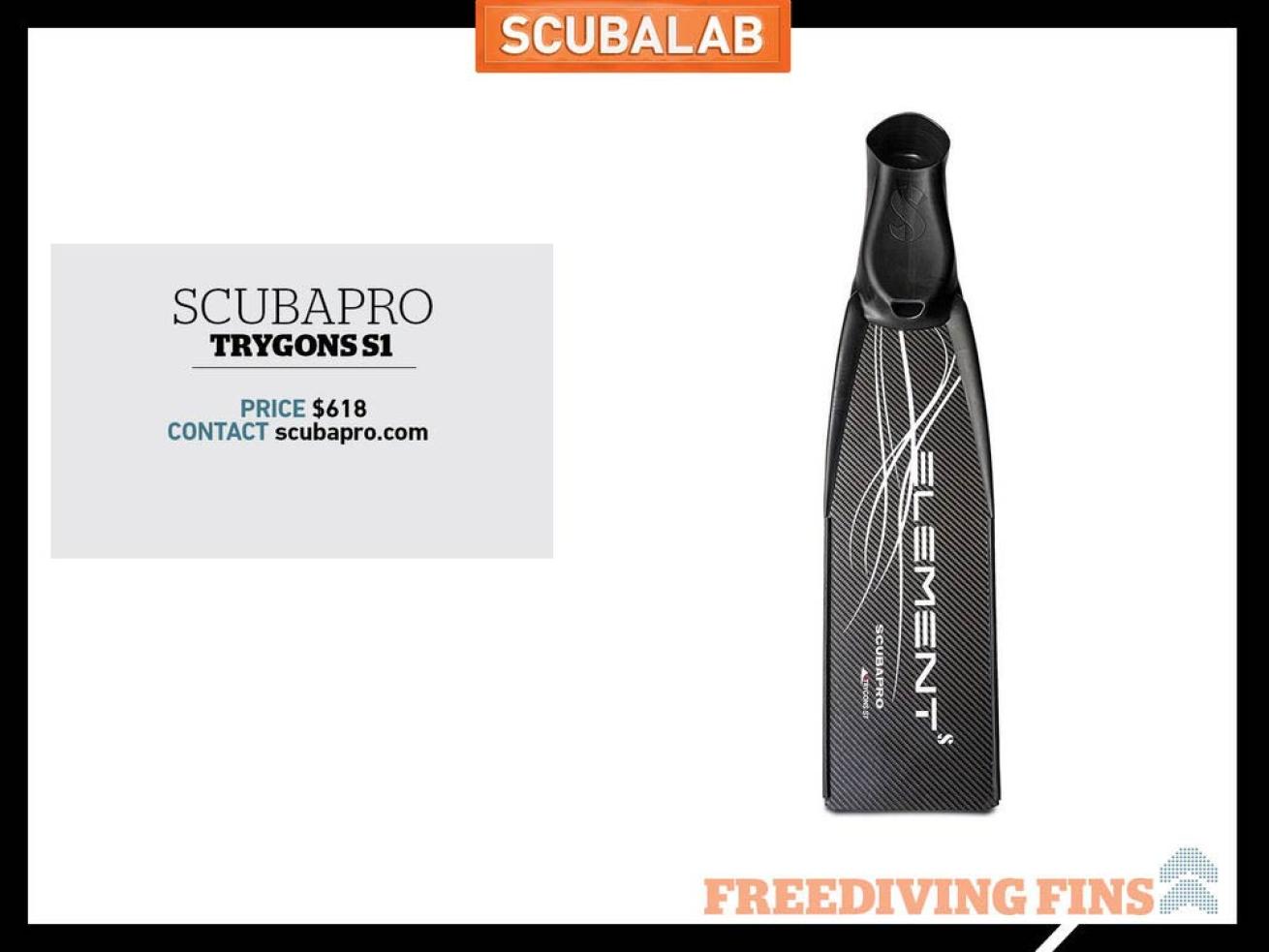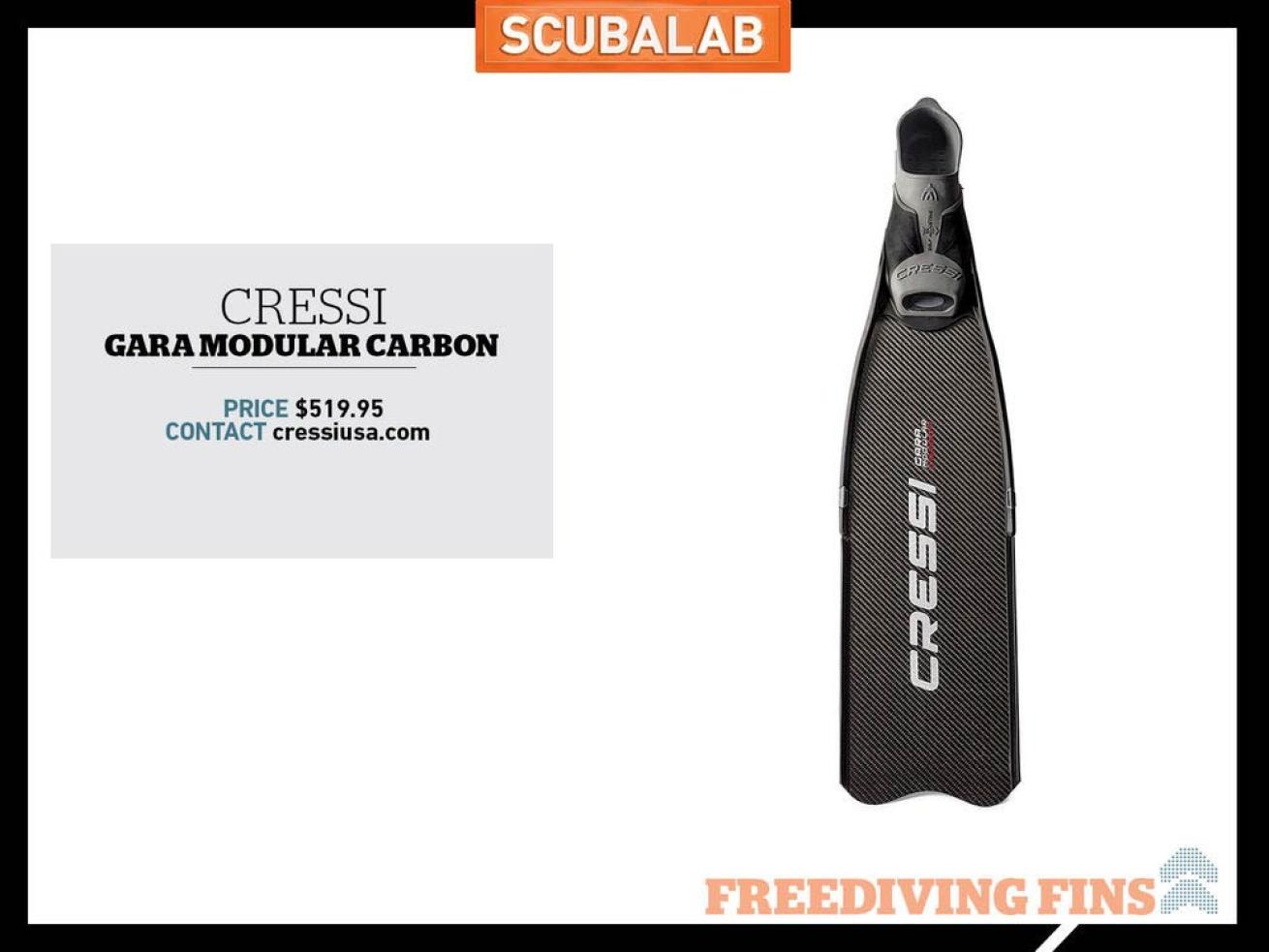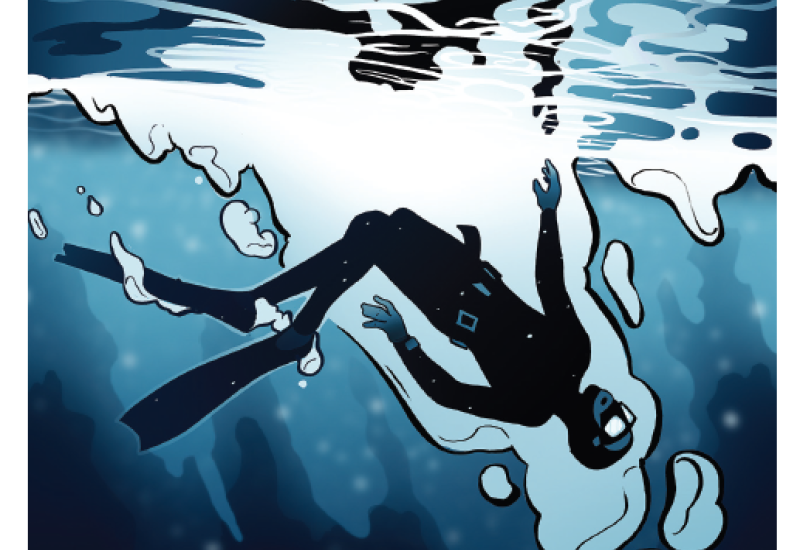Best Freediving Fins on the Market Reviewed by ScubaLab
Crossover between scuba diving and freediving gear is becoming much more common, and that’s good news for divers in both sports. The trend is especially evident in masks and fins; manufacturers now offer a host of products to serve both markets. What makes a design tailored to freediving different from traditional scuba gear?
In fins, it’s all about flexibility. The long, slender blades allow divers to use a slow, efficient fin stroke, but they can crank out some serious propulsion when needed. The shape also provides excellent directional control with minimal effort, and the foot pockets are usually very comfortable.
To keep up with this trend, ScubaLab took a break from scuba gear testing to review the latest freediving fins.
Mares Razor Carbon

Jon WhittleMares Razor Carbon
One way to control the flex in a blade is to add rails or ribs; another is to vary the material of the blade. Mares’ Razor Carbon does both, with different carbon weaves at key flex points, visible in the crescent-shaped areas of heavier weave along the short rubber rails a few inches from the tip. The result is a blade with a flex that makes for easy kicking, and a snap that drives the blade through the kick cycle. The minimal rails mean you give up little in maneuverability while getting turbolike acceleration. The Razor Carbon, which shares the detachable foot pocket used across the Razor line, is also a very good surface kicker.
Mares Avanti Quattro Power

Jon WhittleMares Avanti Quattro Power
Too often, dual-purpose gear fails to do either job well. The Avanti Quattro Power is an exception. With its clear resemblance to Mares' scuba-oriented Avanti Quattro+, the full-foot Power shares the ribbed, four-channel blade and flexible tip. It has a lively action, with a linear relation between effort and drive, and is more maneuverable than full-on freedive fins. You won't break world records, but it’s a credible option for spearfishing or entry-level freediving that can work well for scuba.
Oceanic Enzo

Jon WhittleOceanic Enzo
The Enzo has fixed plastic blades that are rather thin and on the narrow side, stiffened by long horns running along the foot pocket, and by ripples — almost like corrugations — that run the full length of the blade. Along with firming up the blade, those ripples channel water flow on the top and bottom of the blade. The minimalist design, with plastic struts rather than thicker rubber stiffening the sole, also keeps the Enzo very light — just 13⁄4 pound in size large on our scale.
Seac Motus Kama

Jon WhittleSeac Motus Kama Freediving Fin
The camouflage pattern of the Motus Kama (a scratch- and abrasion-resistant film) is the most obvious element of its spearfishing orientation, but not the only one. The detachable plastic blade is thick but flexible, designed for a balance of power and maneuverability. The long foot-pocket horns and short rails on top provide speed and stability, while allowing the Motus to scull along easily. The dual-density foot pocket has soft material around the toe and ankle, and firmer stuff along the sides.
Scubapro Trygons S1

Jon WhittleScubapro Trygons S1
The featherweight among the carbon fins we tried, the Scubapro S1 weighs in at barely 1 1/2 pounds (size 13-14). That's partly because the non-detachable foot pocket eliminates hardware; also, the blade itself is noticeably thinner and coated only on the top surface. Thin side rails channel water flow along the square-tipped blade without adding much weight or drag, and the streamlined, low-profile foot-pocket horns contribute to the fin's slippery, low-drag feel when moving through the water.
Scubapro Trygons S3

Jon WhittleScubapro Trygons S3
Intended as a starting fin for freedivers, the Scubapro S3 has a plastic blade that of course can’t match the light weight or suppleness of the S1’s carbon fiber. But it does share many of the S1’s design features at a fraction of the cost, in particular, the nicely streamlined foot pocket, which is attached in the same smooth, low-drag fashion. The blade is a durable soft plastic with low-profile stiffening ribs on the bottom near the toes and on both sides near the squared-off tip.
Omersub UP-F1 Freediving Fin

Jon WhittleOmersub UP-F1 Freediving Fin
While it features a detachable carbon blade, the OMER UP-F1 design is distinctive. The foot pocket, attached with four small bolts, is almost shoelike, with stiff sides and softer material where it contacts the foot. The foot-pocket/blade angle, at 29 degrees, is also more pronounced than on the other fins here, which are mostly in the low 20s. With 1-inch rails that run the full length of the blade, top and bottom, they’re not easy to turn, but they drive hard straight ahead with minimal effort.
Cressi Gara 2000 HF Fin

Jon WhittleCressi Gara 2000 HF Fin
Though it’s a one-piece fin, the 2000 HF is made of three quite distinct materials. There’s a lightweight plastic used in the blade — reinforced with ribs on the bottom and thick rails about halfway down the blade — a silky-soft elastomer in the contact areas of the foot pocket, and a stiffer material to beef up the pocket along the arch and the web of the blade. The result is a lightweight, very comfortable fin with a satisfying pop in the kicking action and decent maneuverability.
Cressi Gara Modular Carbon Fin

Jon WhittleCressi Gara Modular Carbon Fin
The flagship of Cressi’s Gara fin line, the Modular Carbon has a removable blade and a “self-adjusting” foot pocket with a softer section at the center top that allows the stiffer side panels to spread a bit to wrap closely around the top of the freediver’s foot. The carbon blade extends well up into the foot pocket to stiffen the heel, and has long, slender rails top and bottom that run to the tip of the blade, to channel water and maximize thrust.










